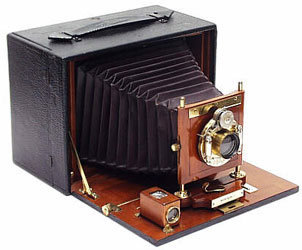
Written by APS Founder and Mid-South Director: Alex Matsuo
The year was 1919; a RAF World War I squadron came together to pose for a group photograph on the day of the funeral of airman mechanic, Freddy Jackson. Jackson was killed two days before by accidentally walking into a plane propeller. Though there is mixed information as to whom the photographer was and the photo was not seen until Sir Victor Goddard, a retired Royal Air Force air marshal, published the photo in 1975. According to various sources, the men in the squadron were able to easily identify Jackson’s face behind one of his fellow men. While investigating the legitimacy of the photograph, one must take into consideration of the time period in which the photograph was taken and what kind of camera may have been used, as well as information behind Sir Victor Goddard and why it took over fifty years for the photograph to be seen by other eyes.
At first glance, finding the second face behind the man in the top row, fourth from the left, was challenging. But when the photo is blown up, there is clearly a face behind the man. First impression may assume a double exposed photo. But upon looking behind the rest of the men’s faces, there is only one face behind one man, and there is no resemblance between the two faces. Also, the ghostly face was clearly identified as Freddy Jackson by the rest of his squadron. The photograph was an official RAF photograph and therefore, technically was not tampered with. The photograph was taken on the day of Freddy Jackson’s funeral and the odds that Jackson showed up for one last picture with his squadron is an interesting theory. Also, one must consider the relationship Jackson had with the man that he chose to pose behind. Perhaps they were friends, family, comrades, etc. This photo was available to order by the whole squadron. One question that I pose is was it only Sir Victor Goddard’s photograph that contained Jackson’s face? Did any other member of the same squadron come forward with a similar anomaly in their picture? Or was Sir Goddard the only one brave enough to come forward? The photograph wouldn’t be his only experience with the paranormal even though he mostly lived a normal life. The photo pre-dates any Photoshop technology and the circumstances surrounding the photo are astounding.
 There is little information regarding the type of camera that was used in the group photograph. But considering the kind of camera used around the early 1900’s, they were made out of wood, parts plated with nickel and individual plates for the negative. This meant that the squadron would have to stand for a long period of time while the photo was exposed for a specific length of time. Considering the equipment of the time, the possibility of this photo being faked is challenging to prove. Freddy Jackson’s face is proportional to the living airman in front of him and there are different facial features between the two. But there isn’t any photograph of Jackson while he was living and there is nothing to compare to or depend on, except for the testimony of people who seem to be reliable.
There is little information regarding the type of camera that was used in the group photograph. But considering the kind of camera used around the early 1900’s, they were made out of wood, parts plated with nickel and individual plates for the negative. This meant that the squadron would have to stand for a long period of time while the photo was exposed for a specific length of time. Considering the equipment of the time, the possibility of this photo being faked is challenging to prove. Freddy Jackson’s face is proportional to the living airman in front of him and there are different facial features between the two. But there isn’t any photograph of Jackson while he was living and there is nothing to compare to or depend on, except for the testimony of people who seem to be reliable.
The theory behind the photo includes ideas such as Freddy Jackson didn’t realize that he passed on and reported for his group photo, he wanted to say goodbye, or that he was so dedicated to his job that he reported for duty even though he had died. Assuming that the photograph is legitimate and not debunkable, perhaps it was Jackson’s way of not only saying goodbye, but also that he was all right.
